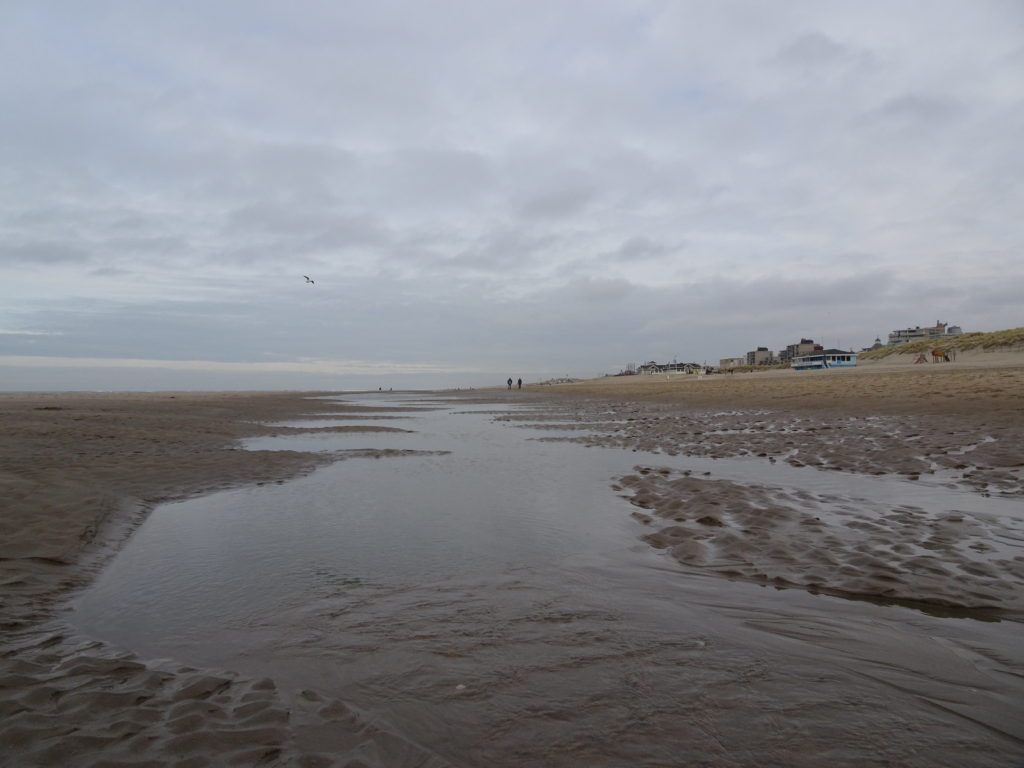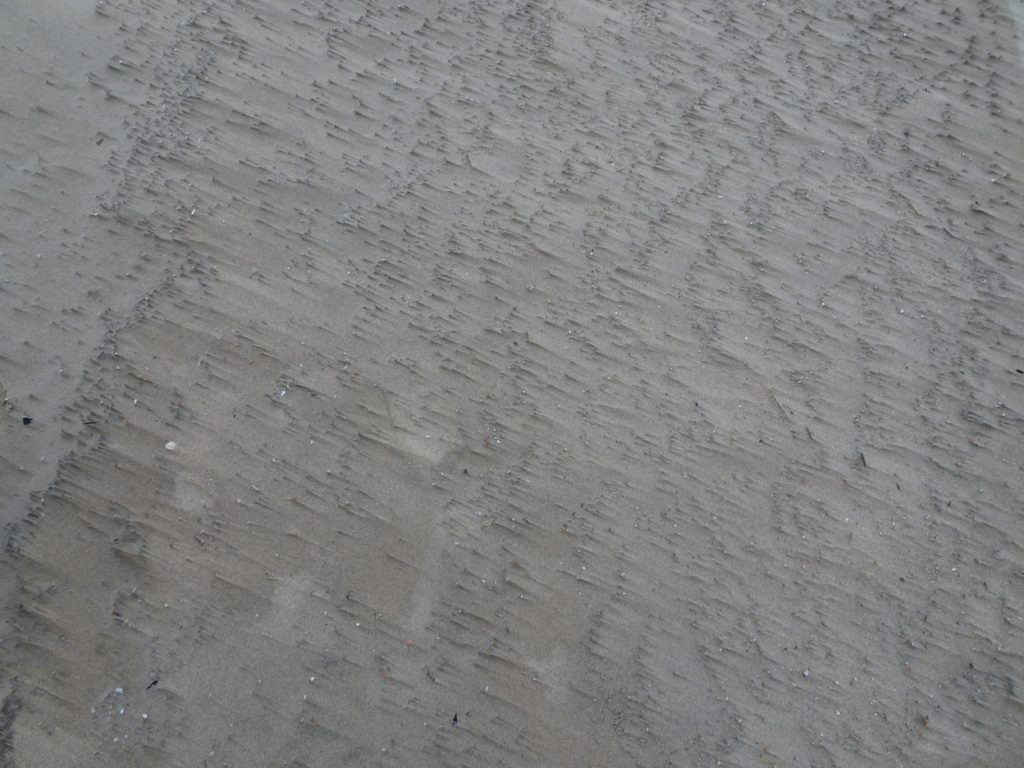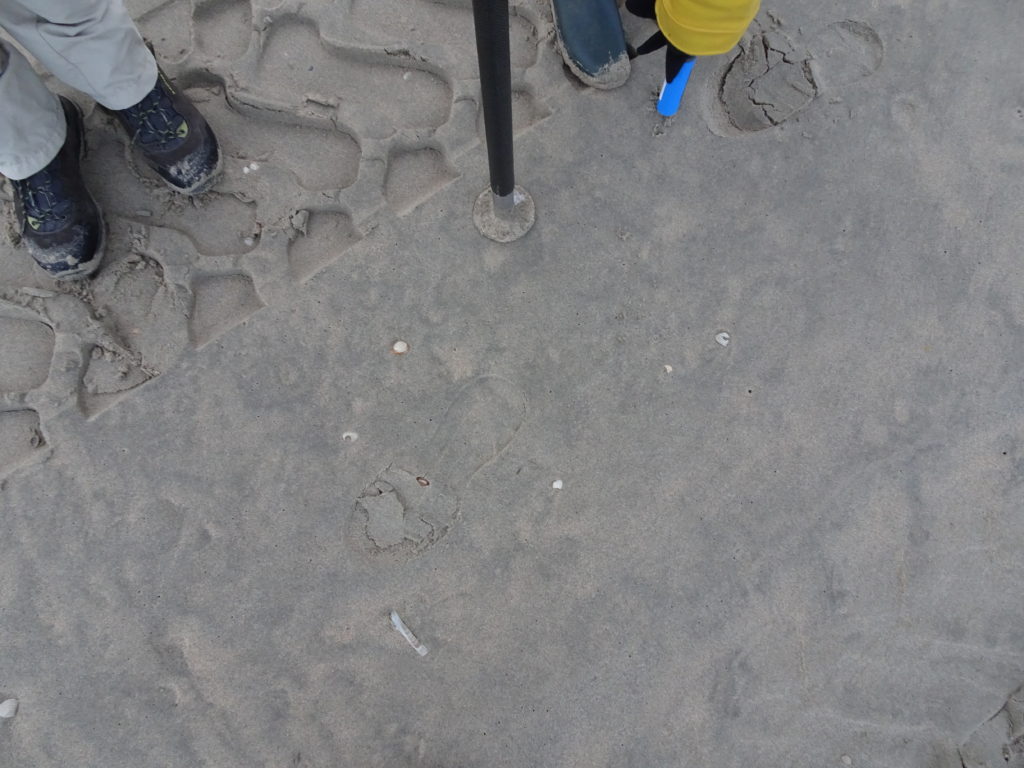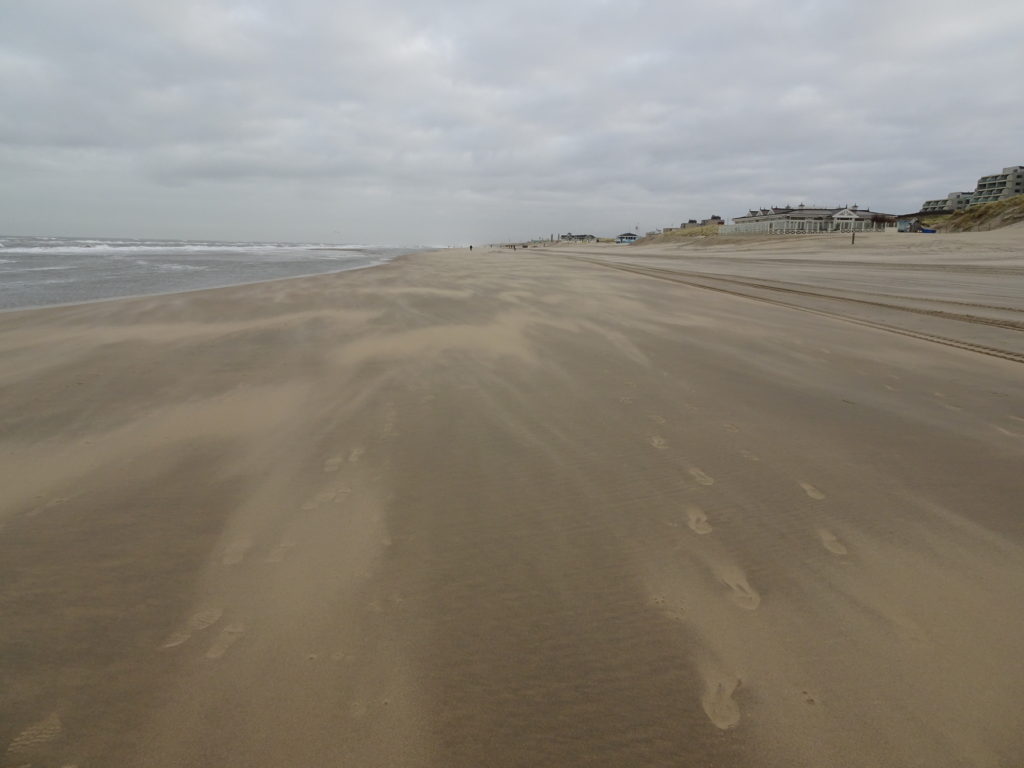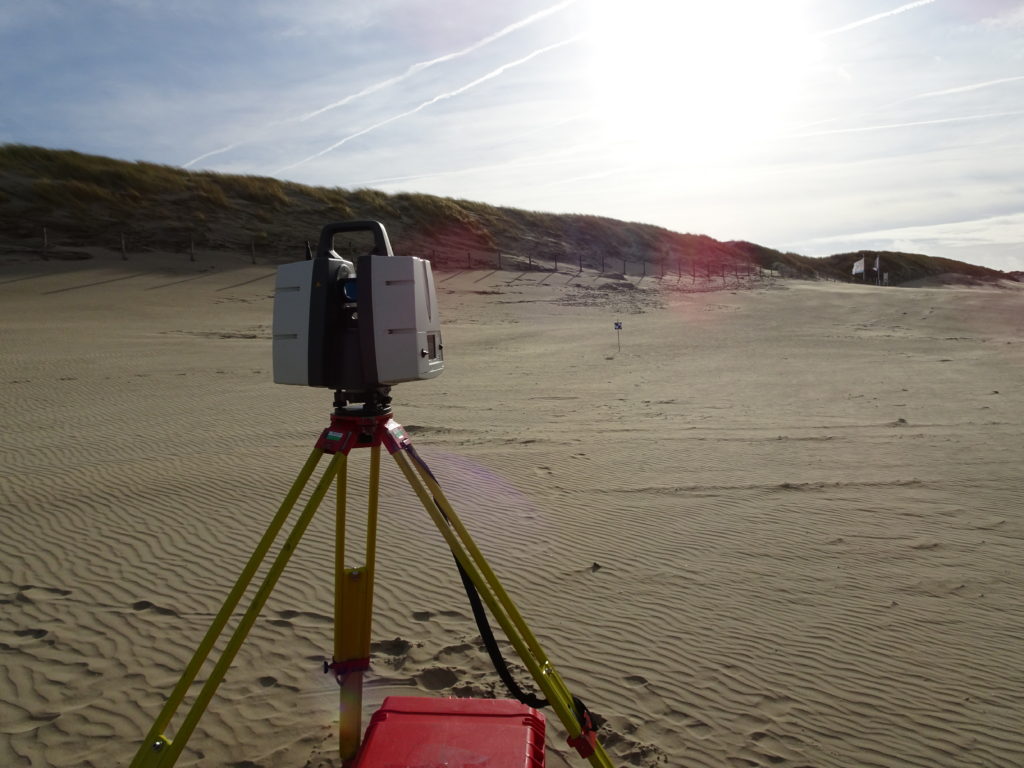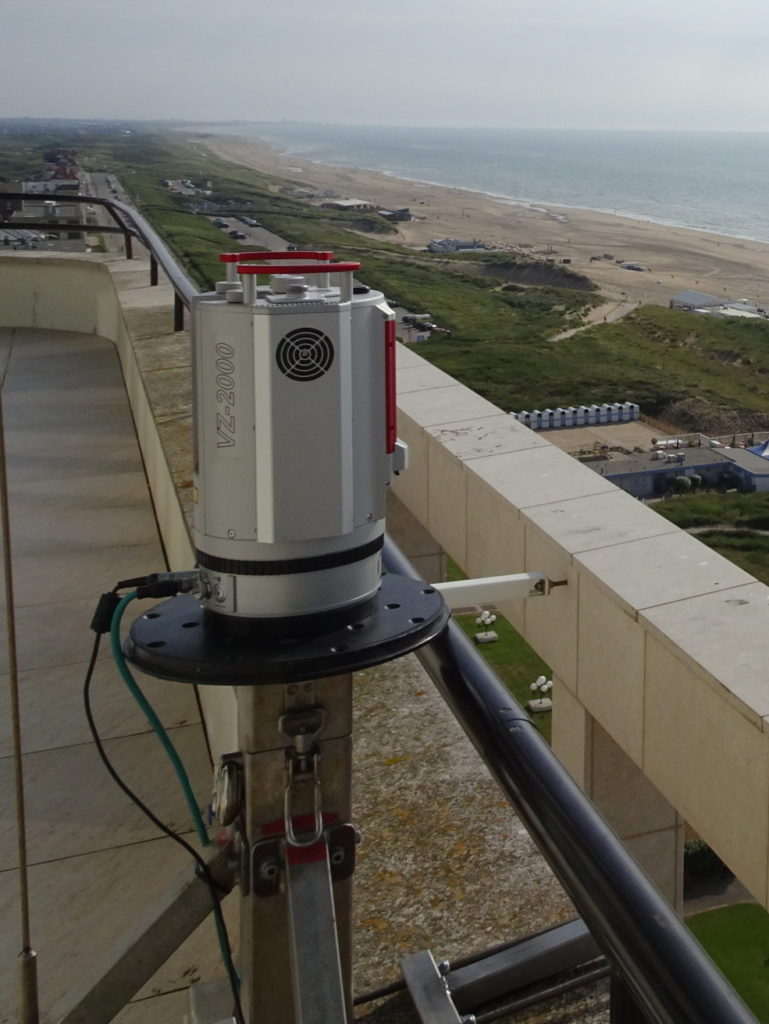On 30 January we did some initial measurements before the official start of the ScanEx Fieldwork campaign in February. There was strong wind and lots of aeolian transport was visible. We collected sand samples and data with moisture sensors, GPS receivers and with our second laser scanner.
We are interested in measuring changes in elevation, soil moisture and surface roughness, as well as analyzing underlying processes like tides and aeolian sand transport.

